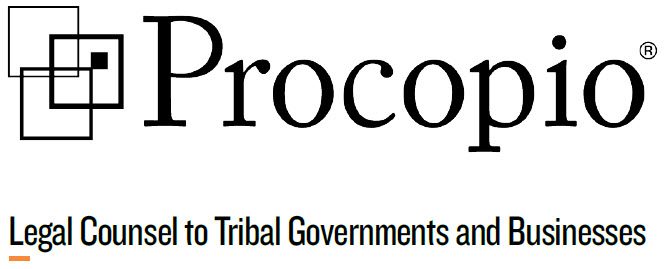By: Kevin M. Davis | Attorney | kevin.davis@procopio.com and
Theodore J. Griswold | Partner | ted.griswold@procopio.com
On June 26, 2015, the U.S. Supreme Court held that same-sex couples have the constitutional right to marry, now protected by the Due Process and Equal Protection Clauses of the Fourteenth Amendment. (See Obergefell v. Hodges, 135 S.Ct. 2584 (2015).) Despite this landmark and far-reaching decision, the freedom for same-sex couples to marry does not extend everywhere. Sovereignty means that each of the 567 federally-recognized Tribal governments may decide for themselves how to treat same-sex couples. In fact, the two largest Tribes in North America—the Cherokee Nation and the Navajo Nation—have laws specifically prohibiting same-sex marriage. (There is a movement to repeal the Diné Marriage Act of 2005, the law prohibiting same-sex marriage in the Navajo Nation.) Nevertheless, many same-sex couples living on Tribal Lands must leave their community to get married, only to return home with uncertainty about how their marriage will be recognized.
I remember as a teenager learning from a public radio program about the Native American concept of the “two-spirit” people. These individuals are viewed by some Tribes as having two identities—one male and one female—that occupy one body. Today, we would refer to two-spirit individuals as intersex or androgynous, or simply feminine males or masculine females. Many Native American people hold two-spirit people in high regard, having both the spirit of a man and the spirit of a woman. These individuals are therefore seen as more spiritually gifted than others, which is an honor to their families and a source of esteem, although sometimes fear, from their communities. In many Tribes, a relationship between a two-spirit person and a non-two-spirit person is considered neither heterosexual nor homosexual.
Caught in the recent whirlwind of public opinion and legal battles, which some would better describe as a tornado or a complete sea-change, many Tribes have grappled with same-sex marriage. Could Tribal laws prohibiting same-sex marriage have been influenced by discriminatory state laws adopted throughout the United States? In 2009, the Coquille Tribe of Oregon became the first Tribal government to affirmatively extend the freedom to marry to same-sex couples. Since then, several other Tribes have either adopted laws allowing same-sex marriage or realized their Tribal code does not reference gender, thereby already recognizing marriage between same-sex couples.
The number of Tribal Nations that legally recognize same-sex marriages is currently around two dozen. That equates to just over 4% of the 567 federally-recognized Tribal Nations. However, recall that only two years ago, the number of American states that recognized these unions was even fewer. In addition, due to ambiguity or gender-neutral Tribal codes, another 77 Tribal Nations may recognize same-sex marriage by not expressly prohibiting them. Just as American civil rights organizations tracked the evolution of state laws on a color-coded map of the United States, it should be interesting to track the adoption of, or even the reversion to, the freedom to marry for same-sex couples in Tribal Nations.
Kevin M. Davis is a member of Procopio’s Clean Technology, Energy, Environment and Resources practice group, who advises public agencies, Native American Tribes, and private entities on environmental and land use matters. Kevin is also a member of the Board of Directors, and the current Chief Financial Officer, for the Tom Homann LGBT Law Association, which is the diversity bar association in San Diego County dedicated to the advancement of gay, lesbian, bisexual and transgender law students and attorneys.
Ted Griswold is head of the Native American Law practice group and primary editor for the Blogging Circle. Connect with Ted at ted.griswold@procopio.com and 619.515.3277.
